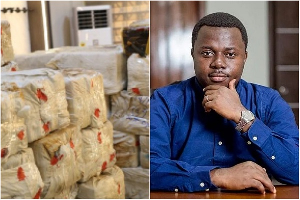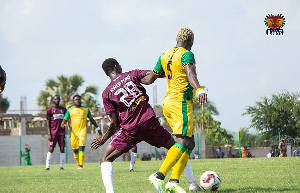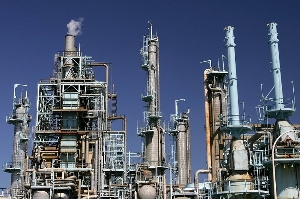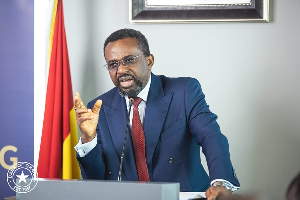Ghana has always prided herself as one of the best countries when it comes to medical education. Ghanaian doctors and nurses are highly sorted after around the globe and the country has been known to be home to some of the best medical schools in Africa.
Over the last 15 years, Ghana has built some of the best medical facilities, increased her medical schools, from innovative teaching methodologies to ultra-modern clinical and research faculties (Ho, Tamale, University of Ghana, teaching hospitals and Bolgatanga Regional Hospital among others), medicine is fast becoming Ghana’s top academic faculty.
With a population of over 30 million and one of the countries in Africa with the youngest population, Ghana’s health care delivery has been found to be inadequate.
In an address he made to the nation in the early days of the lockdown due to the COVID 19 pandemic, the President of Ghana, Nana Addo Dankwa Akuffo Addo pledge to build 88 district hospitals and 6 regional hospitals plus rehabilitation of Effia Nkwanta Regional Hospital in Sekondi/Takoradi, however, he admitted that in other to staff these new facilities more medical personnel would have to be trained.
Not long after, the former President, John Mahama, also pledge to build a first-class hospital in the newly created regions and a district hospital in all the districts in the country. According to the World Bank development indicators data, the ratio (2017) of doctors (per 1,000 patients in Ghana) was reported at 0.1359.
Emigration of doctors have always been a challenge for the Ghanaian authorities which has crested shortages in the health and has affected health care delivery in the country. The training of physicians is low relative to the country’s needs. From 2014 a raft of reforms was introduced by President Mahama led NDC administration to assist with the retention and enhanced productivity of health workers, however, there are still shortages outside of the large cities.
In terms of the policy differences between New Patriotic Party led by President Nana Addo Dankwa Akuffo Addo and the National Democratic Congress led by Former President John Mahama isn’t much. In the 1970s and 80s Ghana lost majority of her skilled professionals, which was exacerbated by the expulsion of Ghanaians from the neighbouring countries in 1983 and 1985. Majority of Ghanaian professionals who returned to the country left soon afterwards to mainly Europe and North America. This excessive outmigration of Ghana’s professionals left the country in a very precarious state, especially the effects of the outmigration of health professionals affected Ghana’s health care delivery.
Under the Structural Adjustment Programs, which was initiated under the Bretton Woods Institutions (World Bank and the IMF) in Ghana( a program that was first implemented in Japan, and later applied in a host of countries – the so-called “Economic Miracle”) opened up the economy which allowed private investments into the country and selling of state assets and job cuts in civil service, including reforms in the financial, educational and health sectors. User fees were for the first time in the nation’s history were introduced in the health and education sectors.
The shortages of health professionals, especially nurses and doctors led the PNDC/NDC administration under ex-President Flt Lt Jerry John Rawlings to “respond by expanding the training and allowing private sector involvement in the training of health workers especially nurses and midwives”, Asamani et al, March 2020. The expansion of nurses and midwifery training colleges and the improvement of health sector salaries attracted more people into the profession and other allied health colleges.
This expansion in both government and private nursing colleges has led to the Ghanaian government’s inability to absorbed the excess graduates into the limited health facilities in the country.
Throughout the history of Ghana’s health care delivery, nurses and midwives have played key roles and their contribution to health development in the country have been immense.
Within the opposition, NDC have emerged two schools of thought on how to health care delivery must be delivered, both at the district and regional levels. The first group, which includes NDC Ranking member for Health, Hon. Kwabena Mintah Akandoh argued that by building more district hospitals, including accommodations, transport and scholarships for their children to attend boarding schools and improved allowances, would encourage them to work in the rural areas.
However, the second group, which includes most of the NDC leadership have explained that in addition to proposals of the first school of thought, the incoming NDC administration under President John Mahama would ensure all the 16 regions of the country have a first-class Regional Hospital.
With the shortage of physicians in the country, Ex-President John Mahama (the current Presidential candidate of NDC) has proposed a series of measures to enhance the delivery of health care in the country. Under President Mahama’s health reforms, medical school education would be expanded and encourage bright students from the rural and less privilege backgrounds to attend medical school, as well as increased the number of teaching hospitals in the country.
With the University of Technology and Applied Sciences to start medical school as soon as the university is inaugurated, it is envisaged that Bolgatanga Regional Hospital, which has all the facilities in place to train medical doctors and other allied health professionals, would be converted into a teaching hospital.
According to those close to President Mahama, his health policy would be the most comprehensive health reforms ever implemented in the history of the country. President Mahama has been credited with building most of the current health infrastructure in the country which have helped Ghana to deal effectively with the COVID 19 cases. Under the Mahama health plan, the following hospitals would be converted into teaching hospitals:
Greater Accra Regional Hospital (Ridge Hospital) Accra
Effia Nkwanta Regional Hospital would be rehabilitated and converted into a teaching hospital
Police Hospital in Accra would be converted into a teaching hospital
37 Military Hospital and Kumasi Military Hospital would be converted into teaching hospitals
Bono Regional Hospital in Sunyani would be converted into a teaching hospital.
Eastern Regional Hospital in Koforidua would be converted into teaching hospital.
Upper East Regional Hospital, Wa, to be converted into a teaching hospital.
Tema Regional Hospital, Tema, to be converted into a teaching hospital.
As part of President Mahama’s health reforms, all nursing and midwifery training colleges are to be University Colleges and will offer 4-year Bachelor of Science degree in Nursing and Midwifery.
The shake of the health reforms would include a proposal where anyone with a health professional qualification, including nurses and midwives, can sit an entrance examination to go to medical school. Experience Nurses and Midwives would be trained to become nurse consultants and offer general practitioner services in rural and district hospitals alongside physicians as is the case in most developed countries.
The growth of private for-profit accredited health providers would be given added incentive to employ full-time nurses and midwives, instead of relying on dual public sector health employees, a measure which would be strictly enforced to stimulate health sector job creation, Asamani et al.
President Mahama’s health care expansion would reform the National Health Insurance Scheme. According to those close the NDC Ranking Member of Health, Hon. Kwabena Akandoh, the government would bring in innovative policies to make the scheme the best in Africa.
Already, Hon. Akandoh is in the process of setting up a committee to look into the reforms on the NHIS. With the proposal to convert 6 regional hospitals and 2 Security Services hospital into Teaching Hospitals, the transformation of Ghana’s health care systems would bring first class health delivery to the citizens.
The number of medical schools in Ghana currently are:
School of Medicine and Dentistry, University of Ghana, Legon, Accra, and the largest in the country.
School of Medical Sciences, Kwame Nkrumah University of Science and Technology, Kumasi.
School of Medicine, University of Development Studies, Tamale
The Medical School, University of Cape Coast
University of Allied Health Sciences
Family Health Medical School
Accra College of Medicine
C4C Homeopathic Medical College
Under the Mahama’s health policy proposals, Ghana will have 3 additional medical schools, however, The Police Hospital Medical School, 37 Military Hospital Medical School and Kumasi Military Medical School would only train service personnel who would work alongside their civilian counterparts.
Ghana’s rapid development over the past decade has turned the country into a thriving hub for most companies setting up their regional headquarters in the country.
President Mahama knows that a healthy and educated workforce would not only increase the productivity of the country but would encourage more inward investments into the country.
According to those close to the NDC Ranking Member for Health, Hon. Akandoh, the committee setup by President Mahama during the COVID 19 pandemic would be transited when NDC takes over the government from NPP and advice the Mahama government in its health delivery policies.
Opinions of Saturday, 27 June 2020
Columnist: Peter Jeffrey















